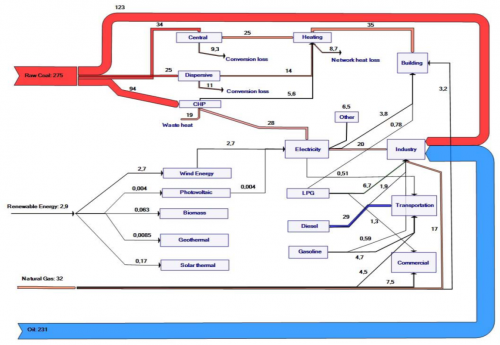Below is a Sankey diagram representing the energy balance for the city of Urumqi in Northwestern China. This was elaborated in a Sino-German Project on ‘Meeting the Resource Efficiency Challenge in a Climate Sensitive Dryland Megacity Environment: Urumqi as a Model City for Central Asia’ and has been published in the Integrated Heating and Building Energy Efficiency Master Plan for Urumqi in 2010
The Sankey diagram doesn’t sport the energy unit, but the text comment says:
The 2007 energy balance of Urumqi shows that about 541 PJ of primary energy was consumed in the city, accounting for 28% of the Xinjiang total (1,927 PJ). Urumqi used 25% of Xinjiang’s coal, 50% of its oil, 12% of its natural gas, and 4% of its renewable energy, much of it in heavy industry. This results in high energy related per-capita CO2 emissions of 22 tonnes. In 2007, the city consumed 14.7 million tonnes of coal (approximately 51% of its primary energy supply) whereby 30% of the coal consumption was used for the heating of buildings.
